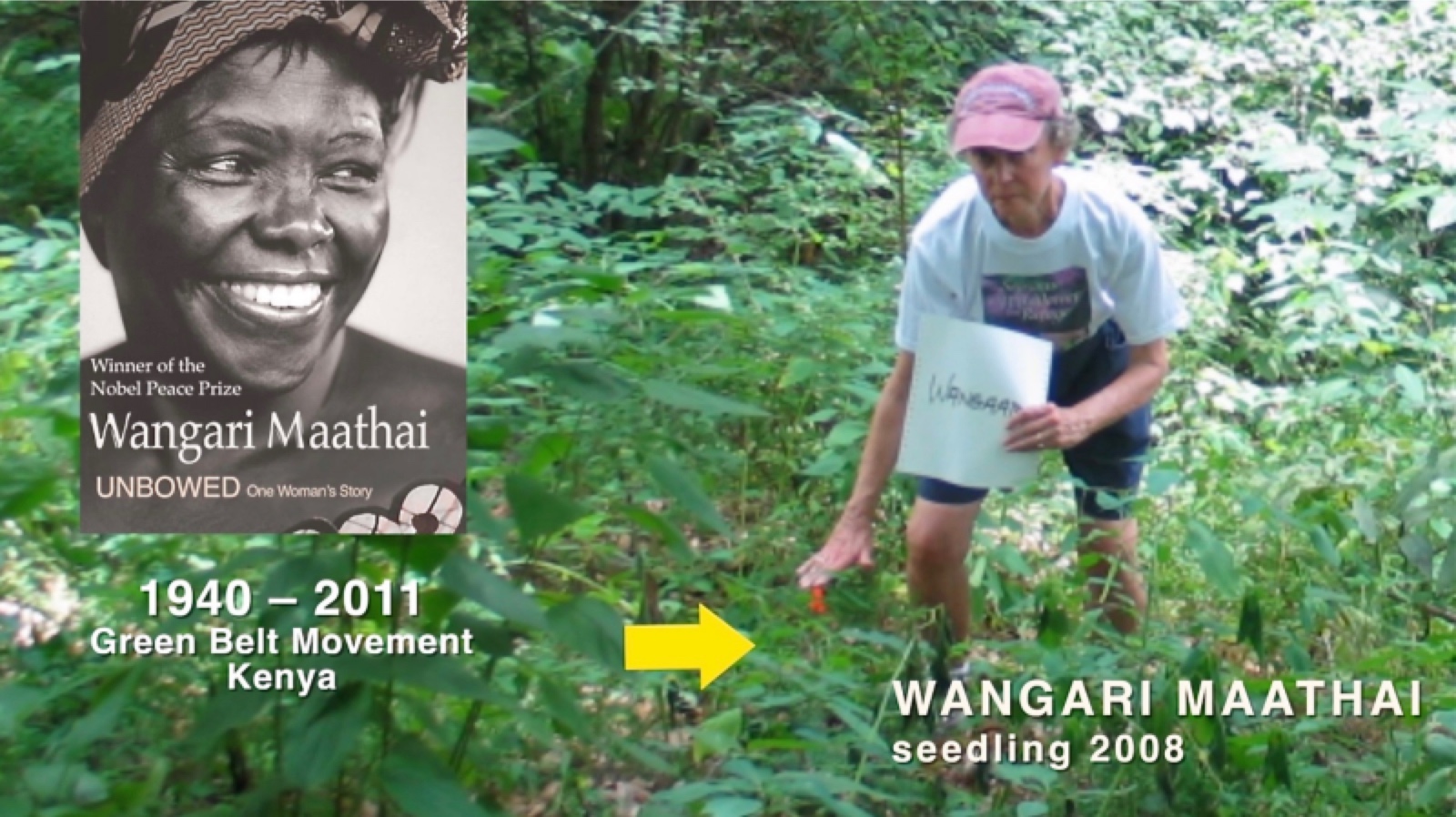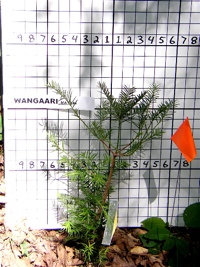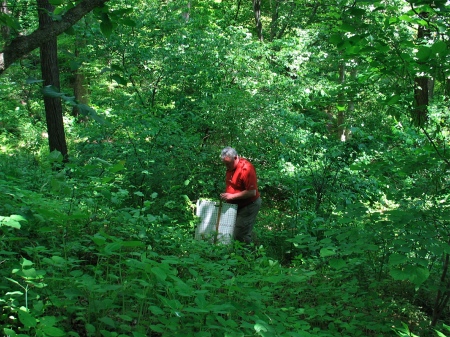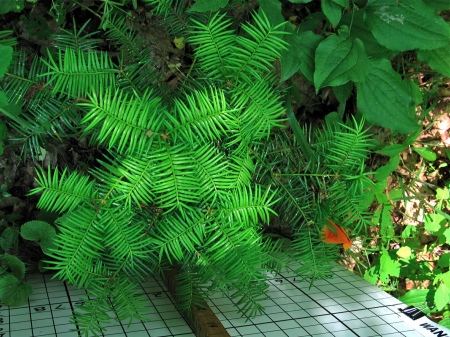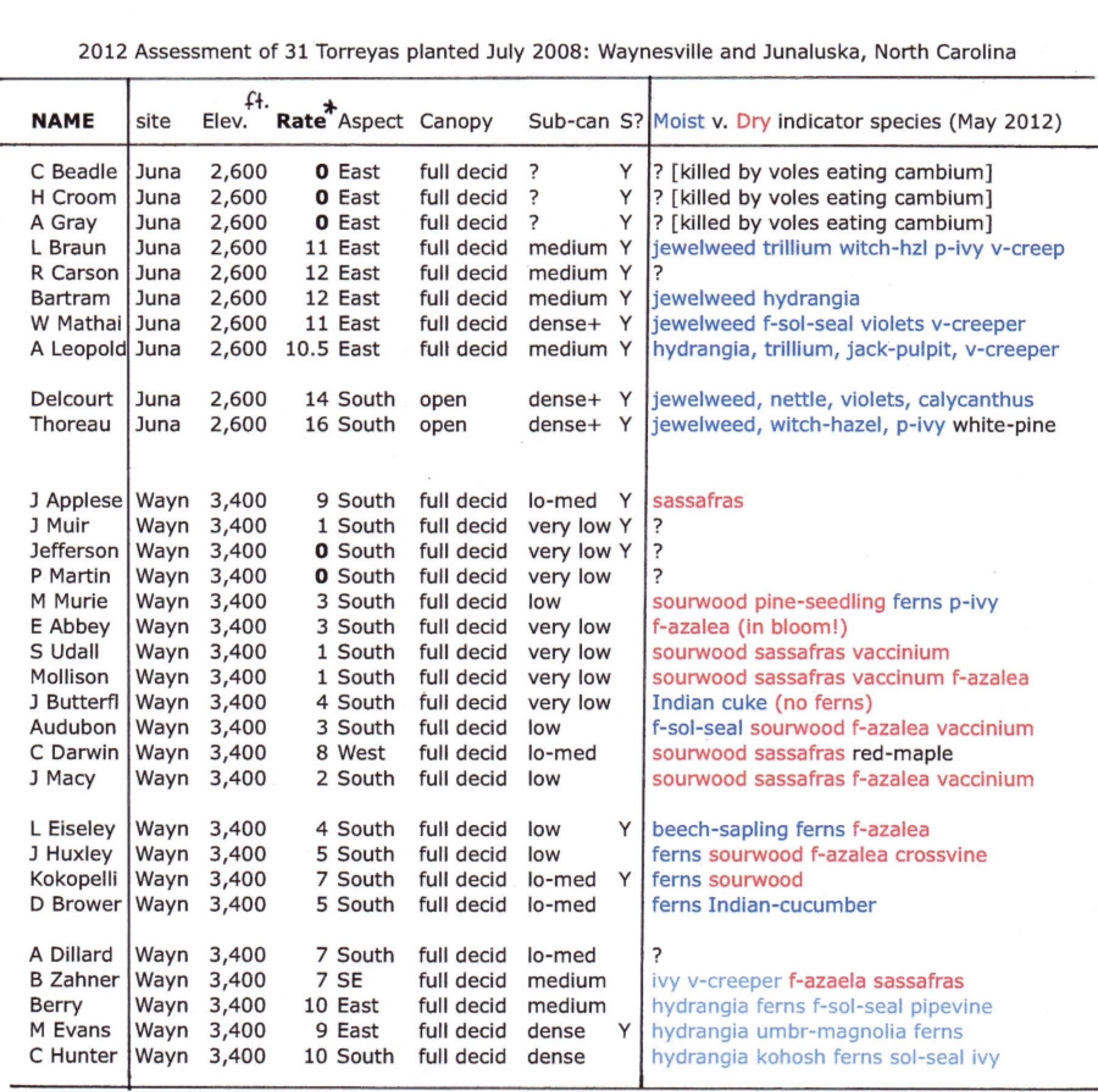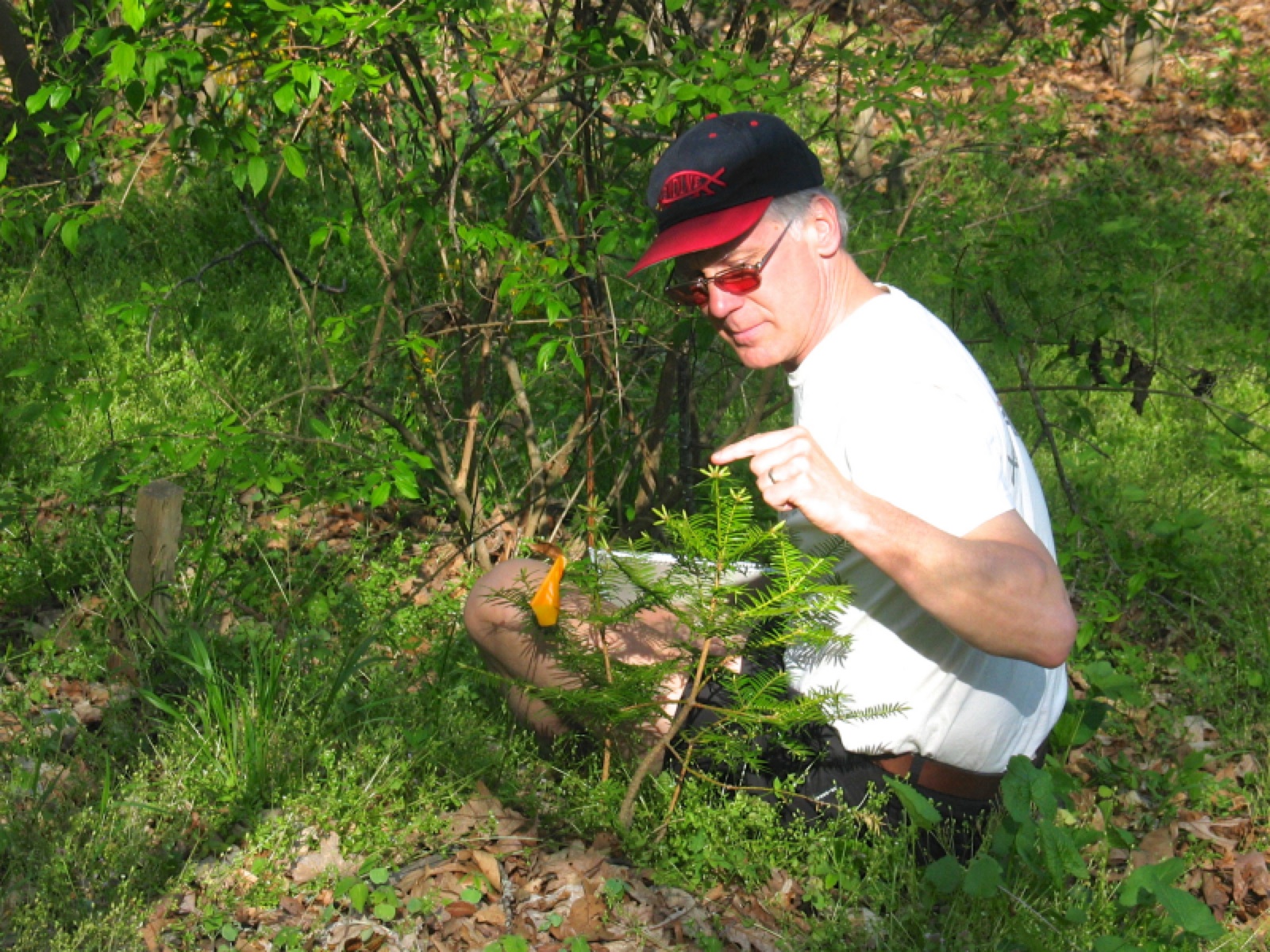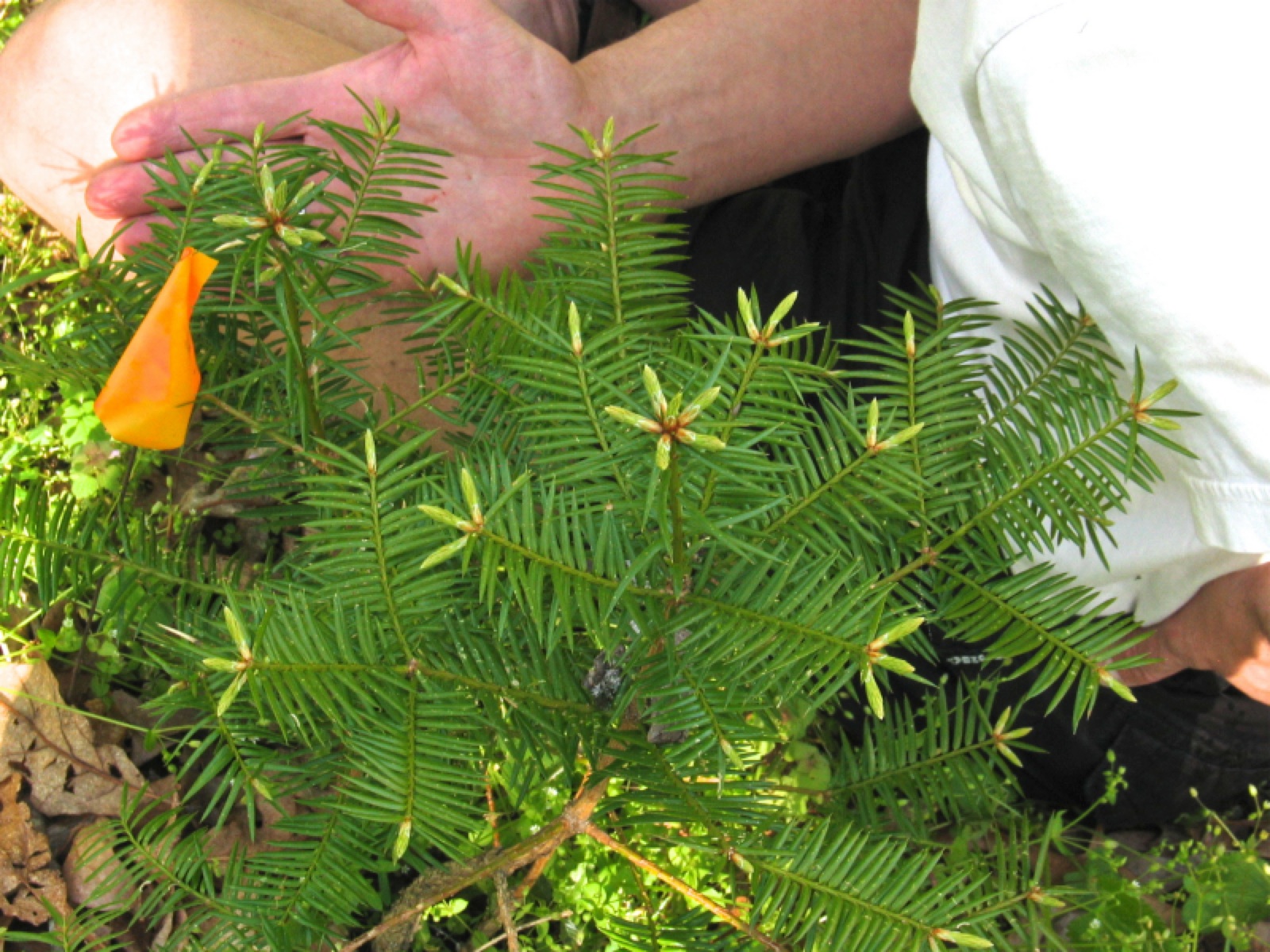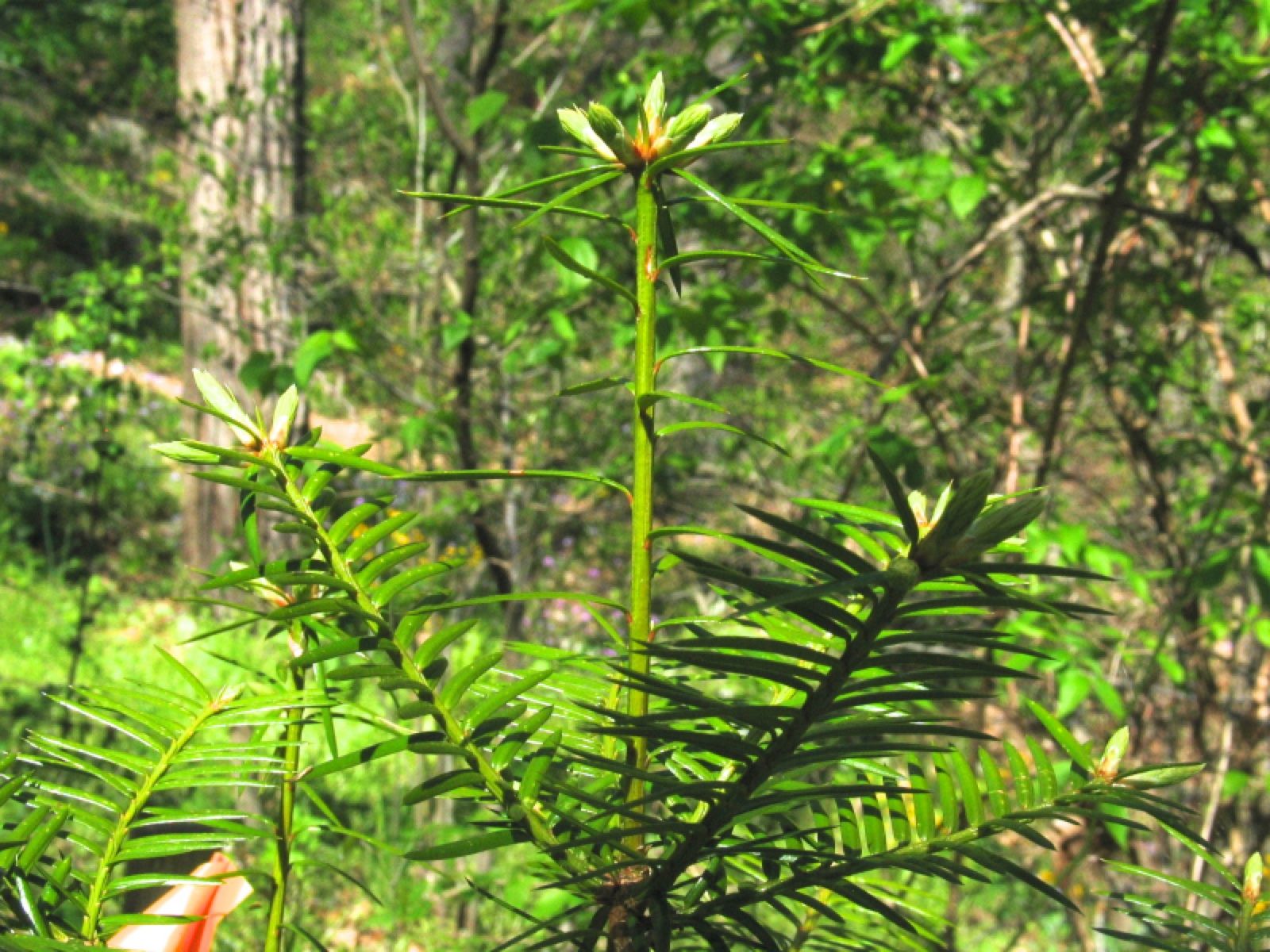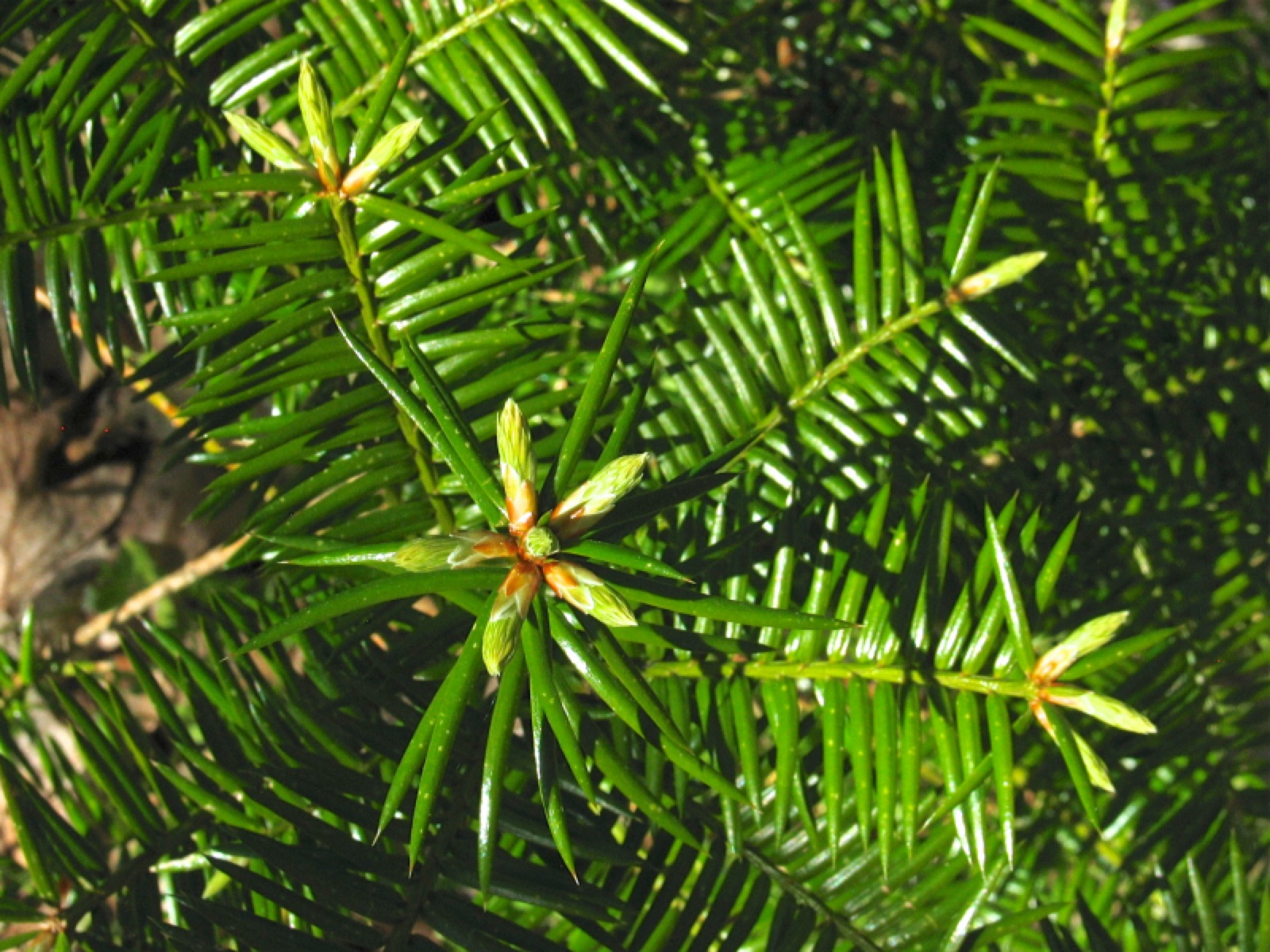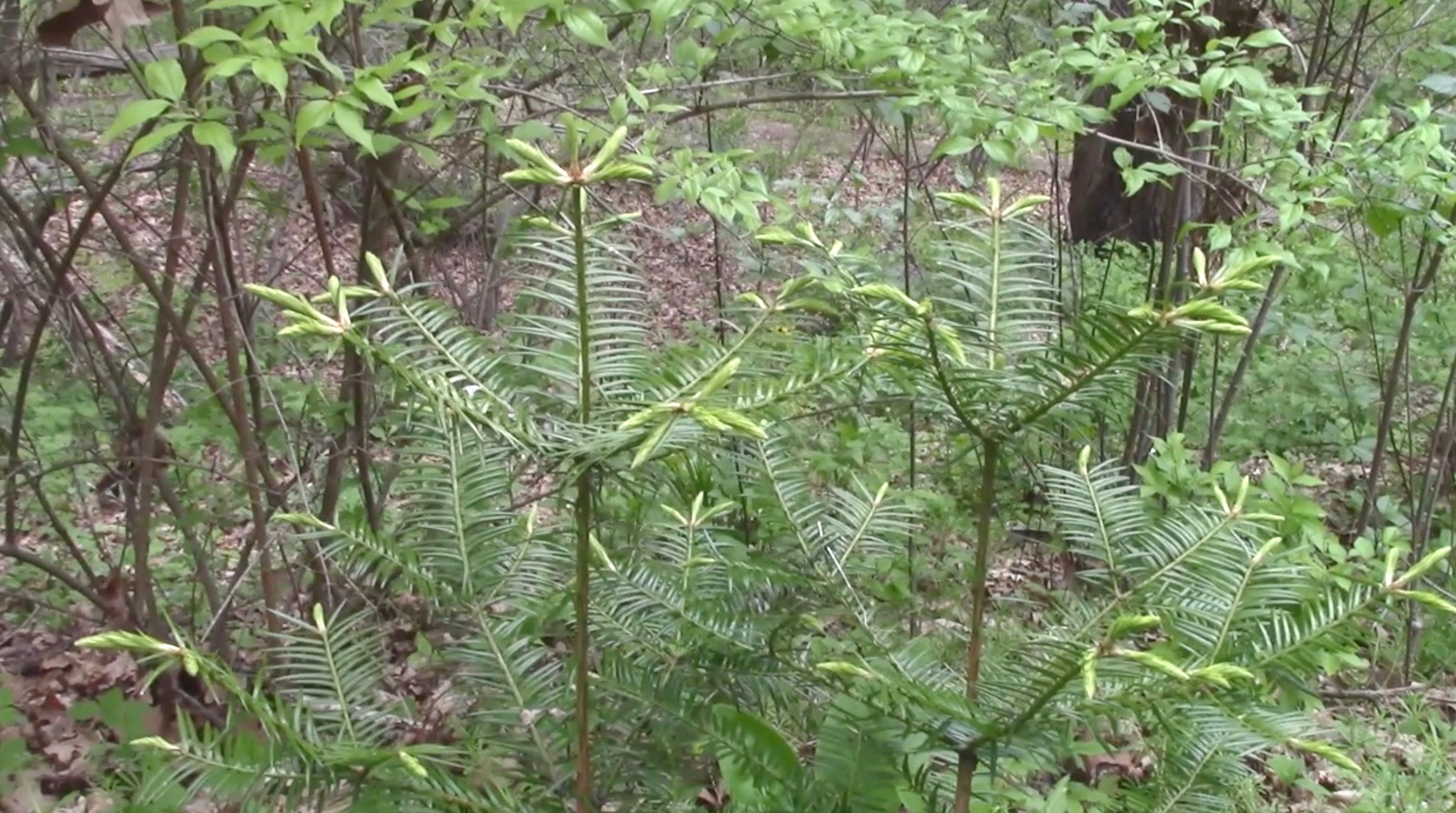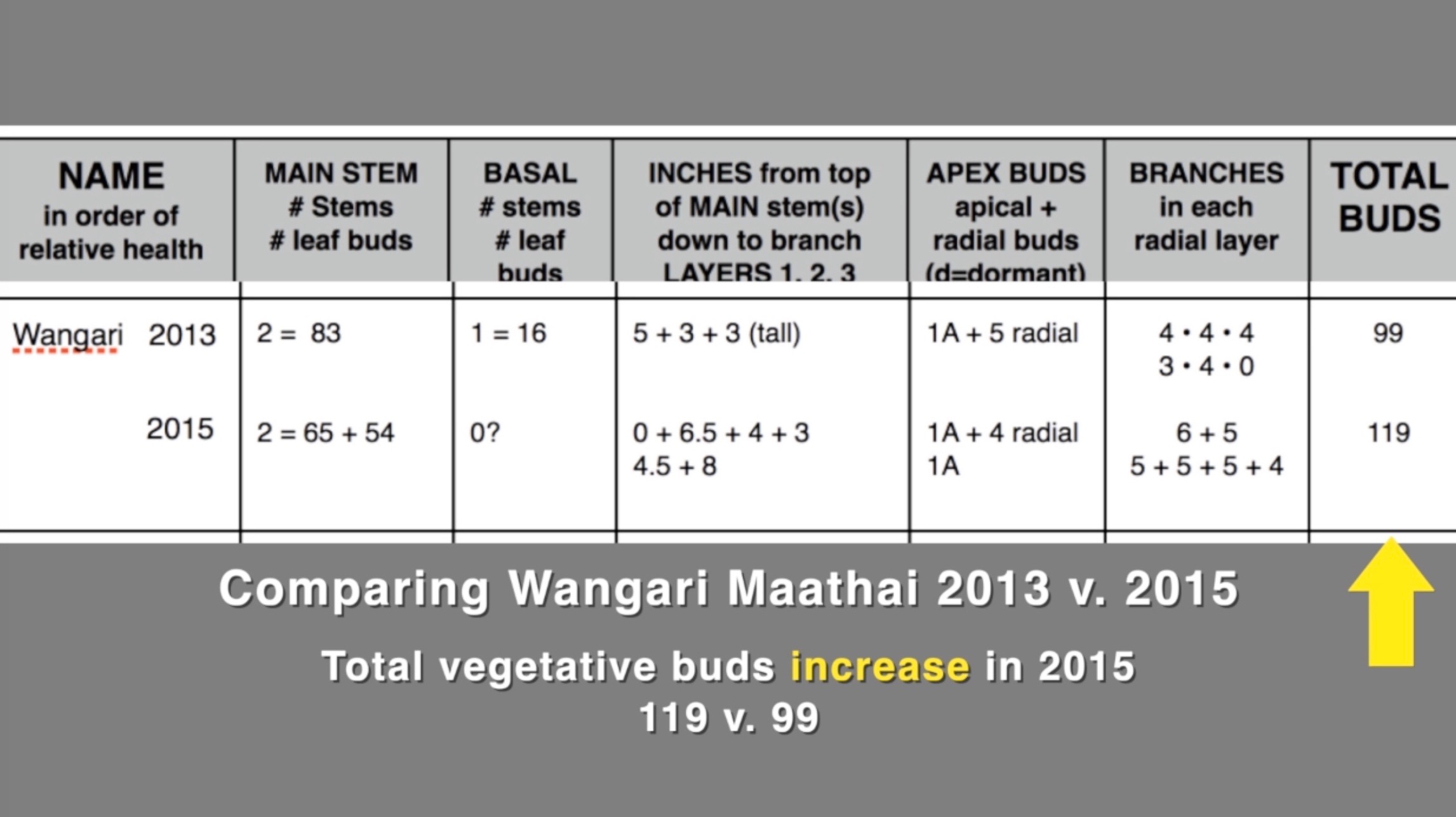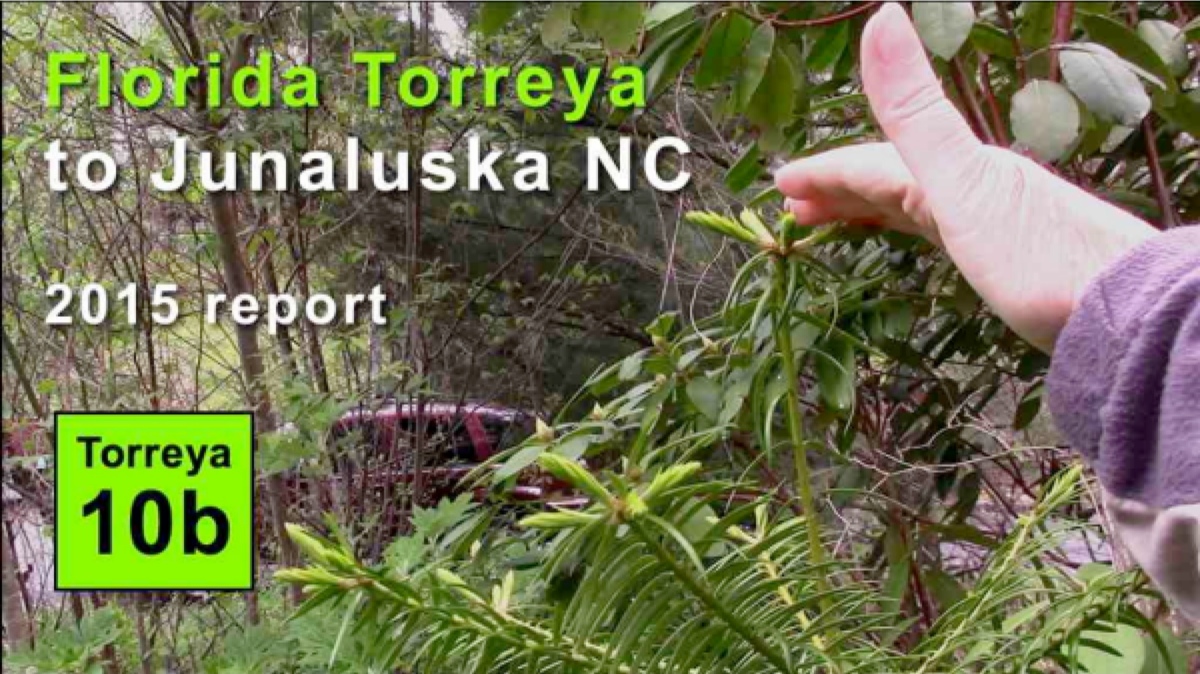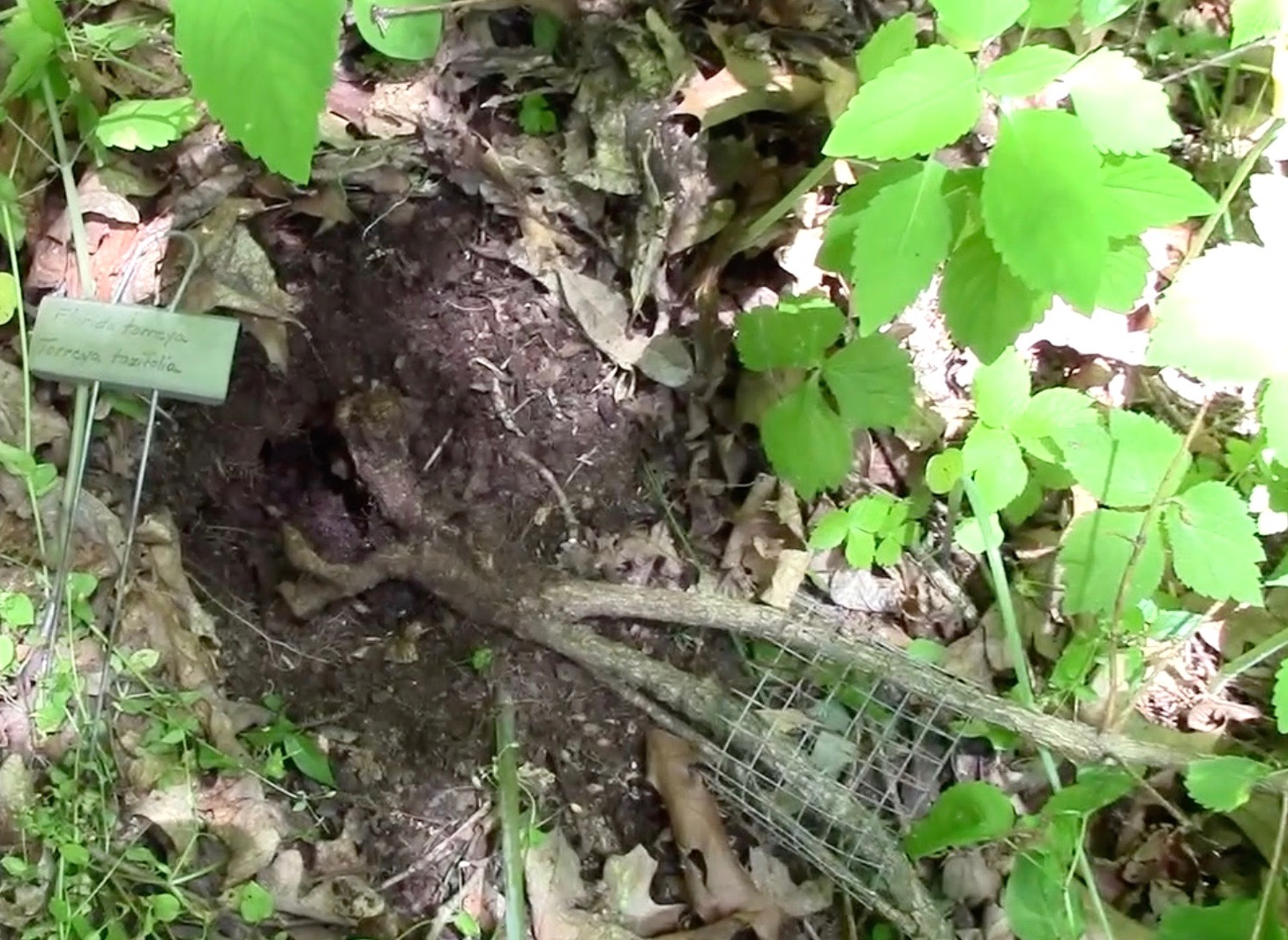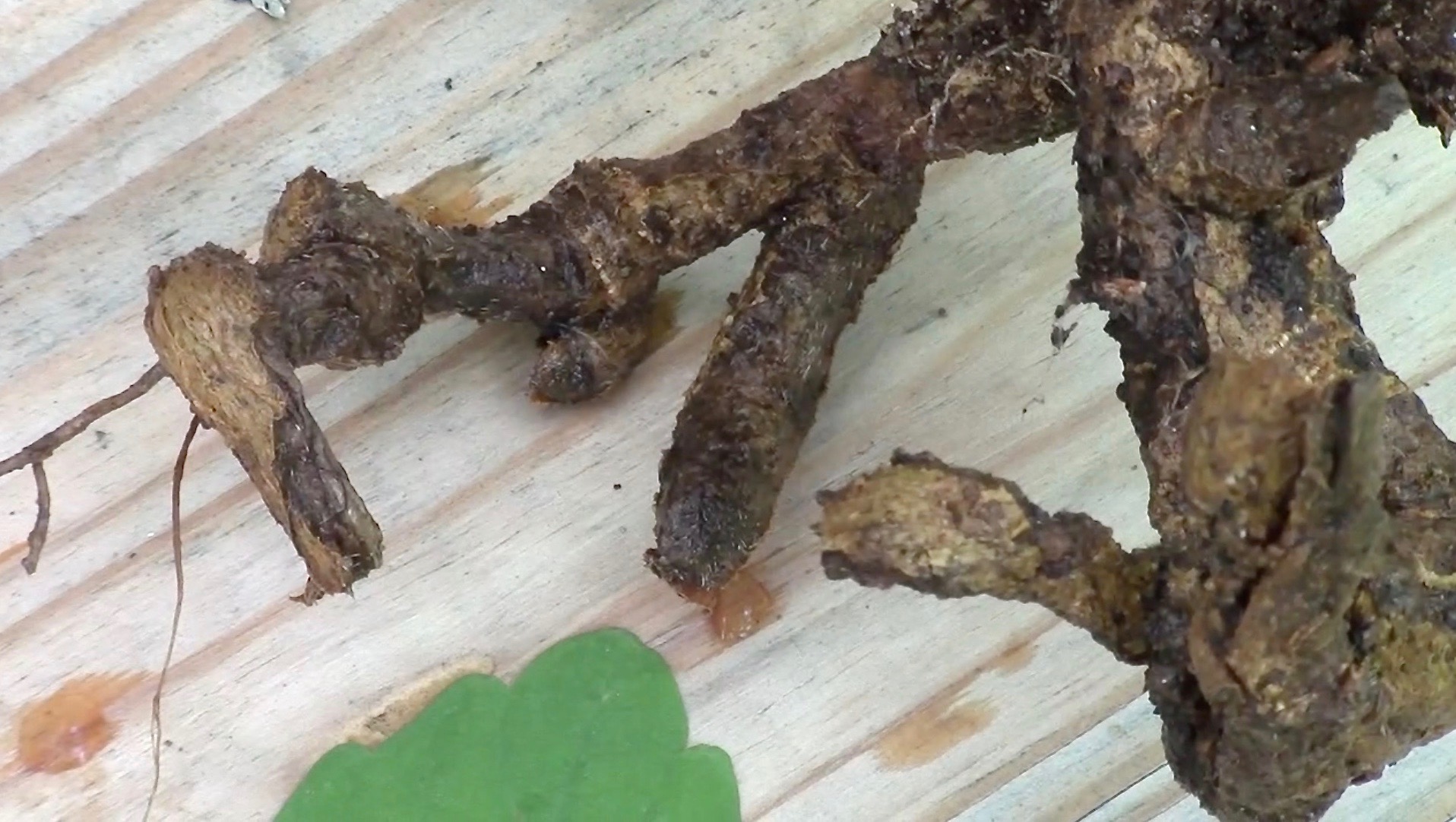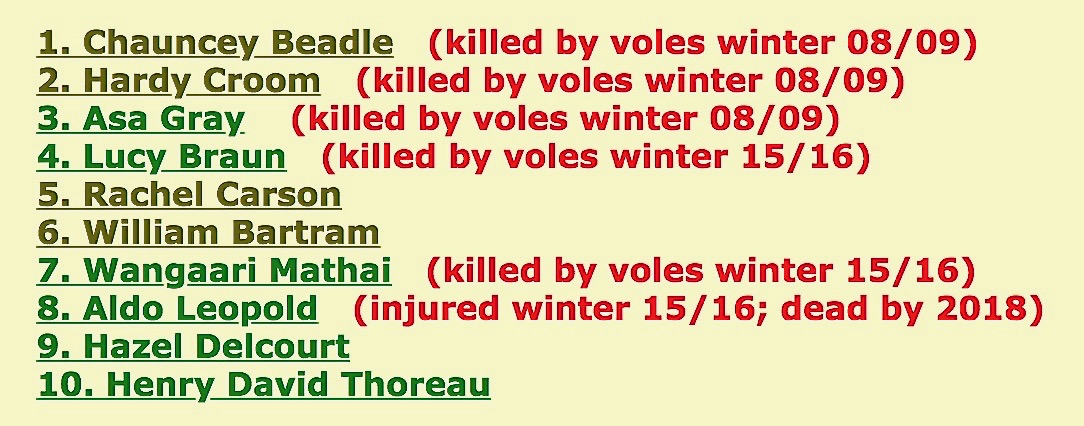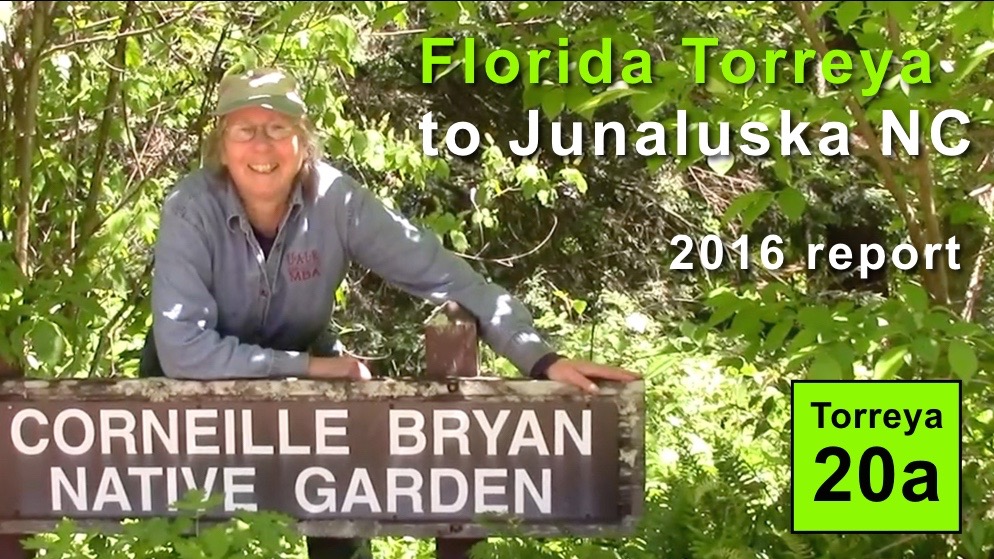Lake Junaluska, North Carolina (planted July 2008)
killed by voles Winter 2015/16
Location is NE-facing slope of a NW-to-SE ravine with perennial creek at the bottom, in Corneille Bryan Native Garden, Lake Junaluska NC (2,600 feet elevation). The uppermost canopy above this specimen may be entirely white and red oak, thus affording sun for growth mostly in early spring and late fall.
FOUR YEARS LATER
ABOVE LEFT (May 18, 2012): Associated herbaceous plants include jewelweed, false Solomon seal, Virginia creeper, Smilax, and others unidentified. Caged against voles at base.
ABOVE RIGHT (May 18, 2012): On a scale in which "Celia" specimen is rated by Lee Barnes as a 10, this specimen is rated an 11.
ABOVE CHART: In 2012, Lee Barnes accompanied Connie Barlow on an assessment of all of the 2008 plantings on both the Junaluska and Waynesville sites. Connie asked Lee to use his judgment in rating each of the trees. Because they visited the Waynesville site first, two trees tied there for the highest rating on a scale of 0 to 10 (Thomas Berry and Celia Hunter). When they visited Junaluska, however, the torreyas were so much more vibrant that the scale began at 10.5 and went up to 16 for Henry David Thoreau. WANGARI MAATHAI was rated 11.
SPRING 2013 photos below taken April 23, but spring was delayed nearly 2 weeks, so it is more like April 10. Thus, instead of light-green new growth photographed above in spring 2012, there is only light-green leaf buds to indicate the vigor of the plant. Because the canopy trees have not yet leafed out, this is an ideal time for evergreen Torreya to photosynthesize.
ABOVE LEFT and RIGHT (April 23, 2013): Michael Dowd with this specimen. Of all the Torreya seedlings from the 2008 planting at Corneille Bryan Garden, Wangaari has gained the least height (basically, the same height as at planting but much more filled out with branches and branchlets). Nonetheless, the strong apical buds and the number of triplet buds on the tips of the laterals suggest healthy growth.
ABOVE LEFT and RIGHT (April 23, 2013): Side-view and top-down view of the main stem. Notice the abundant light-green leaf buds: the radial-5, plus single vertical, on the apical stem will produce the same growth configuration as evident from the prior year: about 5 inches of upward growth, with five radial branchlets — each of which will produce a triplet of outward extending branchlets. Overall, it seems as if this is the year in which that vaulting main stem will prevail and robust vertical height will be gained.
NEW MEASURE OF HEALTH IN 2013: leaf bud count = 83 on main stem and 16 on the single ancillary basal stem.
APRIL 25, 2015
The WANGARI MAATHAI tree is found at timecode 21:01 through 23:58.
MAY 21, 2016
While filming here in 2016 Connie Barlow discovered that tunneling, root-eating rodents had killed over winter two previously very healthy torreyas: Lucy Braun and Wangari Maathai. (See list, below. Photos above are of Wangari.) All 6 of the rodent-killed trees were closest to the SW corner home that had a hanging birdfeeder in 2016, which Connie hypothesized as the cause of a boom-and-bust rodent cycle in this seasonally occupied neighborhood.
Of the 5 remaining Torreyas planted in 2008 at the lower end of the garden, 2 were killed overwinter 2015/16 by rodents eating the tree roots (Lucy Braun and Wangari Maathai) and another is gravely injured in the same way (Aldo Leopold).
The death of LUCY and WANGARI are timecode 01:24 through 07:00. Discovery of the possible culprit, BIRDFEEDER, is 20:51 through 28:28.
MAIN PAGE OF TORREYA REWILDING PHOTOESSAY |
